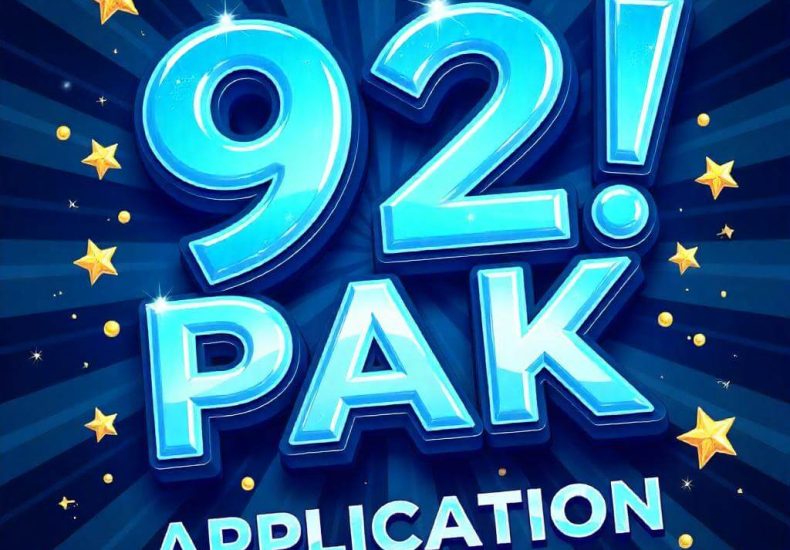
92 Pak – Color Choices and Player Psychology: How Game Decisions Reflect Real-World Thinking
Discover the unseen relationship between player risk assessment, psychological evaluation strategies, behavioral patterns, and color selection in games like 92 Pak. Understand the reasoning behind gaming choices.
The Unspoken Dialect of Colors Within Videogames
The gaming world is rapidly evolving with new innovations, and 92 Pak is gaining traction for its captivating phone games in the Pakistani online gaming community. One of the biggestdraws are color prediction games due to their level of simplicity along with the allure of potentially earning money. These provide an interesting glimpse into human psychology and decision making behavior.
Choosing a color as simple as red, green or blue reveals so much about risk assessment,
decision making under stress scenarios, and managing monetary evaluations amidst gains or losses.
This article aims to explain how choices made by players during cognitive games involving colors mirror mental processes.
Attractiveness of Games with Predictable Outcomes Such as Color Games
Operating on a basic premise.
color prediction games offer more rewards through accurate guessing sequential colors that are chosen randomly.
Their simplistic nature accompanied by instant gratification results is what fuels thousands upon thousands of users on a daily basis.
Every video game has different mechanics that impact people psychologically in different ways:
Real-time risk and reward trade-offs.
Balance of risk-and-reward management happens instantaneously.
Unique personal strategies based on intuitive pattern recognition, probabilistic estimations, and at times, sheer superstition are crafted by players.
Each one of these micro-decisions offers deep insights into how people make decisions where even a small amount of risk is involved.
92 Pak: Color Selections And Cognitive Biases
Gambler’s Fallacy
A significant number of users fall victim to gambler’s fallacy which is defined as the assumption that previous events dictate future results within random games. If five reds have appeared consecutingly for example, some players will think greem is “overdue.” Decisions grounded on this reasoning tend to appear sensible but contradict statistical logic.
Loss Aversion
Research conducted in behavioral economics has demonstrated humans are far more sensitive to losses than they are towards equivalent gains. Within analyzing the 92 Pak color games, players seem to adhere to specific colors longer than what the statistically probable suggests simply because feel too great to switch, even if it makes more sense mathematically.
Psychology Of Colors
Colors hold psychological meaning:
- Red indicates a need for immediate attention or action and urges quick-slash aggressive decision making.
- Green suggests safety and signals balance encouraging subdued behavior which translates into less risky decision making.
When available in a game, blue is associated with calm and confident emotions.
Players might unconsciously choose colors that correspond with how they are feeling or what they want to achieve.
92 Pak: Consider Random and Pattern-Based Styles of Play
Some players lean into highly pattern-based strategies, tracking past outcomes for systems of prediction. Others embrace randomness—betting in ways that create chaos—for the simplicity offered by no discernible patterns.
Pattern Chasers tend to believe in hot streaks and cold streaks, often betting heavier amounts based on recent results. Players who identify as Random may trust their gut or consciously avoid choices to not get trapped in mental ruts.
Interestingly, neither group is inherently more successful over the long term in a purely random game, but approaches reveal very different risk profiles along with unique styles of decision-making.
92 Pak: Making Choices Under Intense Pressure
The temporal restrictions make color prediction games particularly fascinating. The need to choose within seconds adds another layer of complexity requiring focus and sharp instincts.
Within these boundaries:
Fast decision-makers likely draw from instinct or entrenched habits.
Deliberate decision-makers calm down reasoning first before selecting, though quickly strategizing may offer less time than needed leading to rushed conclusions.
Studies indicate constrained-response scenarios heighten emotional volatility while distilling thinking processes down through lenses like optimism bias or risk aversion.
92 Pak: The Power of Social Influence and The Herding Effect
On the 92 Pak website, color prediction games not only allow you to place bets and wins but also show leaders lists where participants bet and showcase their wins. Through social feeds, players see what fellow users wager and earn . This has the potential of changing a player’s decision.
While many may opt for the “top earners bet”, it is very likely that they will choose a specific color as well.
Personal planning almost always gets neutralized by social proof. By showing that a certain number is “hot” compelling others to join in proves color stratagizing obsolete.
This type of behavioral phenomenon depicts herd behavior where participants are prone to follow a large group instead of weighing out pros and cons.
92 Pak: Revealing Insights about Color Prediction Players
Analyzing risk takers through a lens, one can see that they are incredibly impulsive when it comes to placing bets such as those made on real life choices.
Using strong judgment involves stick with safer options like chunk deposit amounts or smaller sized stakes.
Many people seem to lack balance in responding emotionally swing my loss streaks whereas others try develop patterns along the lines of analytical thinking without any logic behind them. These traits mirror the manner in which humans collate information, whether it be finances, pick relationships, or decisions that involve one’s job.
92 Pak: Responsible Gaming
As enjoyable is it is diving into psychysh scrutinies ,risk associated with these prediction games cannot be undermined since they possess genuine monetary value; however one needs pay attention over asses making financially calculated decisions while betting. Understanding personal biases enable one to:
Disregard emotional spending limits.
Set boundaries losing streaks
Make rational decisive moves during rounds for cap
Games involving real cash require careful planning and personal evaluation.

Conclusion: 92 Pak 2025, Beyond the Game
The so-called simple game of color prediction available at 92 Pak gives us an opportunity to learn and observe human behavior when it comes to decision making in uncertain conditions. The players’ selection of colors is not random. Rather, it reveals their psychology, strategies they employed before playing, and how much risk they are willing to take.
As you think about your next move, reflect on this question: Why am I picking this color?
It might help you uncover new things about yourself.
You may also like
Calendar
| M | T | W | T | F | S | S |
|---|---|---|---|---|---|---|
| 1 | 2 | 3 | 4 | 5 | 6 | 7 |
| 8 | 9 | 10 | 11 | 12 | 13 | 14 |
| 15 | 16 | 17 | 18 | 19 | 20 | 21 |
| 22 | 23 | 24 | 25 | 26 | 27 | 28 |
| 29 | 30 | |||||